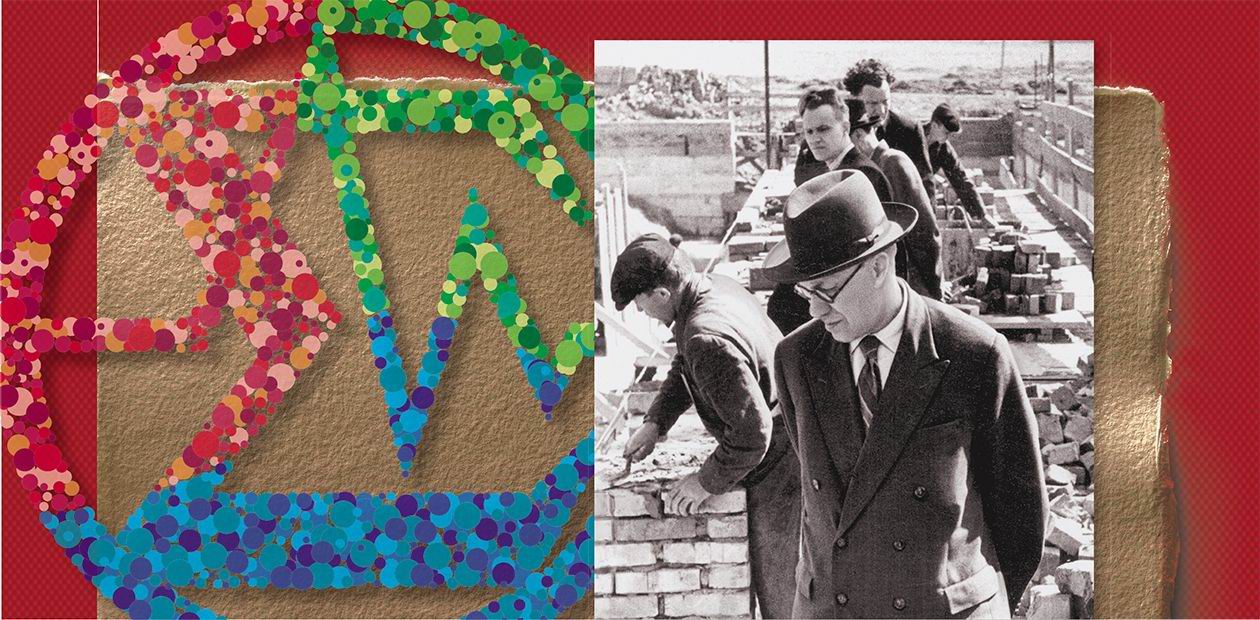A Town of Passionarians
Almost a century ago, in the 1920-30s, a special commission of the USSR Academy of Sciences on the organization of regional affiliates denied the request of local governments in Siberia and the Far East of the country to create local affiliate divisions. The stated reason was that it was impossible “to deploy Academicians to the specified cities without the destruction of the Academy of Sciences as such, and selecting new Academicians, forcing them to live and work in a specified city, is impossible as well.” Even though during the Great Patriotic War the first affiliate branch of the Academy appeared in Siberia, it was late in the 1950’s that «the impossible» happened: several dozen of the most prominent scientists from Moscow, Leningrad, Kiev, Lvov and other cities, joined by their talented students, moved to Siberia – voluntarily and simultaneously
The Siberian Branch of the Russian Academy of Sciences has turned sixty. It owes its existence to an amazing historic event: a large group of prominent and active scientists volunteered to abandon the urban coziness of their homes and workplaces and leave for the remote frontiers in the unknown land that had been a GULAG destination before. These people, who came along with their students and young colleagues to the new scientific center near the Siberian city of Novosibirsk, were the catalyst that spurred the growth of new academic teams and schools.
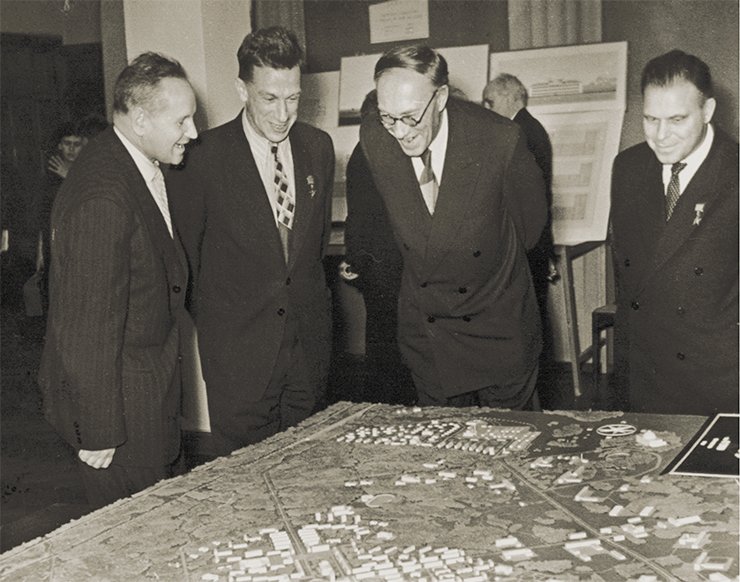
We must admit that this phenomenon had its historic precedents. For instance, the Tomsk University, which is the oldest in Siberia, and the Siberian Physico-Technical Institute, founded in the 1920s, are the fruit of the effort of professors, who moved to Siberia from St. Petersburg. Stalin' exile campaign was the moving force, which brought educated people to the most remote nooks of Siberia – and it was in no way voluntary. For example, in 1950, Yu. B. Rumer, an outstanding theoreticist of physics who had worked with Niels Bohr and Albert Einstein, was transferred to Novosibirsk on the personal demand of S. I. Vavilov. Rumer is considered to be the founder of laser research in Siberia, and of the Institute of Radioelectronics of the Western Siberian Filial Office of the Soviet Academy of Sciences in particular. Nevertheless, these events were more of an exception than a rule for Siberia and the Far East: it suffices to say that by the moment the Siberian Branch of the USSR AS was founded, there was not a single mathematician with a degree of Doctor of Sciences, and there was just one Corresponding Member of the Academy of Sciences.
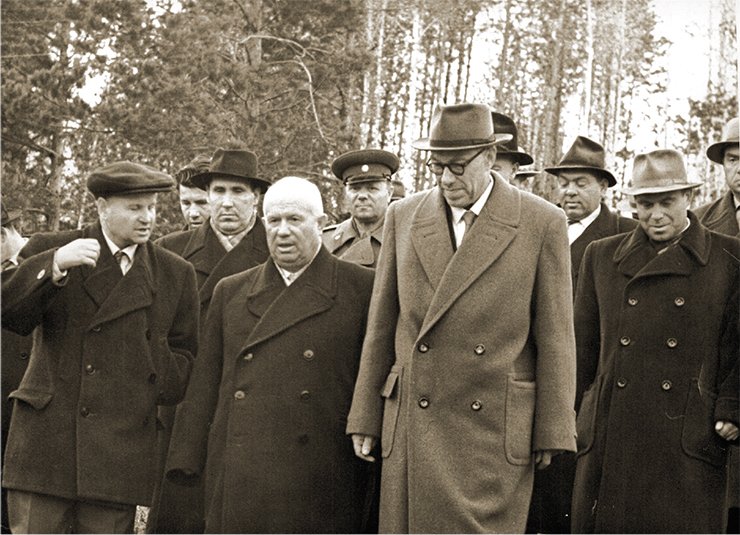
Many leading scientists of the country took part in the development of the foundations of the organization of the Siberian Branch; they also helped to staff it, recommending their best students. For instance, the director of the RAS Institute of Atomic Energy, I. V. Kurchatov, sent a large group of his specialists to Novosibirsk, headed by G. I. Budker. As the result, the Siberian “science troopers” were more than simply brilliant scientists; they were scientists who felt restrained in the capital cities of Moscow and Leningrad and sought new ways to bring their ideas to life, both in research and in science organization. Obviously, everyone had their own personal reasons, but in the end, the common argument in favor of moving was the new possibilities it would open.
Kimberlite, the main diamond-bearing rock, does not always contain precious gems: from the hundreds of kimberlite pipes discovered in Yakutia in the middle of the twentieth century, only 4 percent were found suitable for industry-scale mining. In the late 1960s, the future Academician N. V. Sobolev proposed a method of using minor mineral inclusions as markers of the presence of diamonds: specific types of pyropes and chromites. Thanks to the development of a complex of prospecting methods for diamond deposits, the V. S. Sobolev Institute of Geology and Mineralogy of the SB RAS booked over 145 million carat of prospective diamond resourcesThe second key moment in the birth of this unique academic center was the new way of training our own specialists. I remember very well the words spoken by Academician Lavrentiev at a seminar in the Institute of Hydrodynamics: “We cannot teach you everything. But we can teach you to think!” This key idea was implemented in numerous seminars which began in all institutes right away, and in the creation of Novosibirsk State University – a new school, which prepared the new type of teachers.
Akademgorodok, the outpost and headquarters of the Siberian Branch built in Novosibirsk, was the first structure specifically designed to develop pure research and theoretical education. This was a unique experiment that came up to the expectations: with its high concentration of outstanding researchers with a variety of interests and schools and a large number of young eager researchers the project took off like a rocket.
School of Sable Pups*
N. L. Dobretsov wrote: “Apart from numerous other achievements of our geologists I will mark the Siberian school of oil research headed by Academician Trofimuk, which has earned worldwide recognition. Trofimuk followed the best traditions started by the founder of the petroleum geology in the USSR, Academician I. M. Gubkin, and consolidated virtually all academic, industrial and production oil-related organizations in Siberia. Our country owes the discovery and development of oil and gas fields in West Siberia to this consolidated team. It was here that where world’s first oil and gas deposits in very ancient (over 900 million year old) Upper Proterozoic strata were discovered, followed by discoveries in other countries.”From 1960, my research career as a geologist has been linked (with a short break) with one of the first research institutes of the Siberian Branch – The Institute of Geology and Geophysics. Nowadays its successors are two major research institutions – the V. S. Sobolev Institute of Geology and Mineralogy and A. A. Trofimuk Institute of Oil and Gas Geology and Geophysics. Its founder and first director, Academician A. A. Trofimuk, who supervised research management in all major Siberian towns for many years, decided not to tailor the new structure to his own wishes and instead picked a group of researchers capable of creating powerful scientific schools in different fields. These schools, formed as the result of mutual enrichment of “sources” from Tomsk, Irkutsk, Moscow, Leningrad and Lvov schools, played a crucial part in the development of geology and ore mining sciences in Siberia.
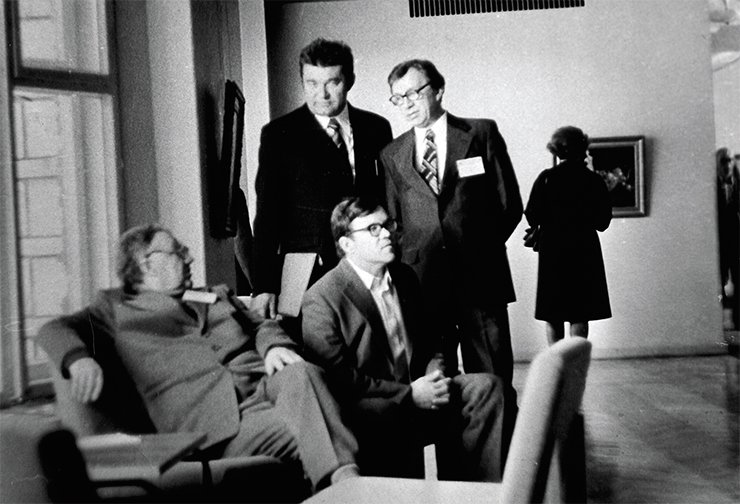
One of the founding scientists was Academician V. S. Sobolev, who I consider to be my “father in science.” Already well known in the world of science, he moved to Novosibirsk from Lvov together with a group of young and talented followers.
OIL IS A GLOBAL BUSINESS! Academician A. E. Kontorovich wrote: “It is a common belief that the success of Soviet scientists and engineers in the atomic and space programs is a unique marker of the creative roots and intelligent power of our science; this is, indeed, true. Without a secure missile and atomic shield it would be impossible to defend our economics, our independence, and keep Russia’s position in the world. But it is hard to imagine what would happen to the Soviet and Russian economies if not for the discovery of the West Siberian petroleum province with its unique deposits of oil and gas. This discovery i a unique achievement of the Russian science and the Russian engineering thought, which I place on a par with the space and atomic projects…For this reason, when some people in our government, who have very vague understanding of science and its mechanisms, speak of inefficiency when discussing the work of the Academy of Sciences, I want to ask a question: what feeds you, except for what our science, and the Siberian Branch in particular, has given you? Without West Siberia, the economy would lie if ruins because of your reforms.
The foundations of the paradigm which originated in the Soviet Union stem to the late 1920s and early 30s; I call it the Gubkin-Baybakov-Trofimuk paradigm. <…> The essence of the paradigm of the development of the whole oil and gas industry in Russia consists in consecutive eastward development of new oil and gas provinces with a focus on the discovery and development of major and giant fields. Since this paradigm was formed not in Russia but in a state that was twice larger – the Soviet Union – it included the development of oil and gas resources in Middle Asia (Uzbekistan and Turkmenia) and Kazahkstan, in particular, in the Peri-Caspian depression, and successive works in Azerbaijan and Northern Caucasus. Nowadays, due to external circumstances, the problem of deposit development in the southern territories has become irrelevant, and those deposits are now being developed independently; however, that development follows the patterns formed in the Soviet oil production school.
What concerns Russia, it has consistently adhered to the Gubkin-Baybakov-Trofimuk paradigm: we went from West to East and reached the Pacific ocean. There was no place further to go. The Okhotsk Sea oil deposits are rather well developed, at least in the shelf around Sakhalin. Strictly speaking, we solved the problem of northern access: in the Yamalo-Nenetsk Autonomous Okrug, we created a unique oil production center. This is the Arctic Ocean coast. Our geologists have already made some outstanding discoveries on the West Arctic shelf: the Shtokmanskoye gas field, the Pechora sea group of oil fields, the Komsomolskoye and Rusanovskoye fields in the Kara sea, a number of fields in the Ob and Taz deltas, – and they continue their work in these territories. Overall, the problem has been solved: the Gubkin-Baybakov-Trofimuk paradigm has exhausted itself. In 2015, we extracted 44 million tons of oil from these fields, and we are heading toward 100—120 million tons a year. Developing small and very small deposits has become an important state affair and the primary task of the industry.
The second problem that the new generation of researchers, geologists, geophysicists, drilling specialists, oil and gas field developers are facing is to continue developing old, exhausted deposit and extract the remaining oil from the sediments. <…> We must continue our work in those oil and gas provinces which still have major undeveloped deposits. Most important of all, this is the territory of the Siberian platform between the rivers of Yenisei and Lena, which still harbors many future discoveries. At the moment, this territory is being thoroughly studied by the A. A. Trofimuk Institute of Oil and Gas Geology and Geophysics of the SB RAS.”
After graduating from the Leningrad Mining Institute in 1957 I worked in the industry and was the head of a survey party. I spent winters in Leningrad and worked summers doing geological surveys in Kazakhstan. But then again fate interfered – in the person of my grandfather. He said: “Go to Siberia – why waste your time in Leningrad? Here, people like you are packed like herrings. There, you will find open space, new prospects. You will be able to show your worth.” He wrote a letter of credence half in jest to Academician V. S. Sobolev, which contained the words like: “… Volodya, do you remember how you carried measuring rods for me once on Magnitnaya Mountain? My grandson seems to be interested in science. Have a look at him if he might be of help.”
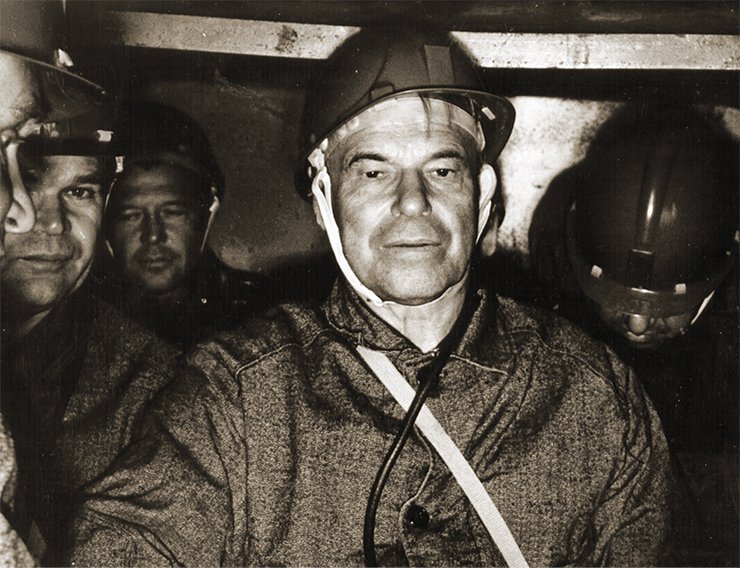
Sobolev impressed me at first sight. We met during one of his visits to Leningrad. It was in the Astoria hotel. He was a kind of sleepy, in a night gown, but very imposing. On the whole, I did not like his outward appearance. But immediately he proposed me to start studying the problem of jade. The proposal was so sudden that I could not remember anything about jade, three years had passed already since graduation. Sobolev continued: “Take this paper, everything is described there. Think about this and give your proposals.” I was shocked because in industry people used to work in an absolutely different way: no unclear problems, no papers. The more so, the paper was in English! To put it shortly, I neglected all other variants and started working for Sobolev. And I have never regretted this decision.
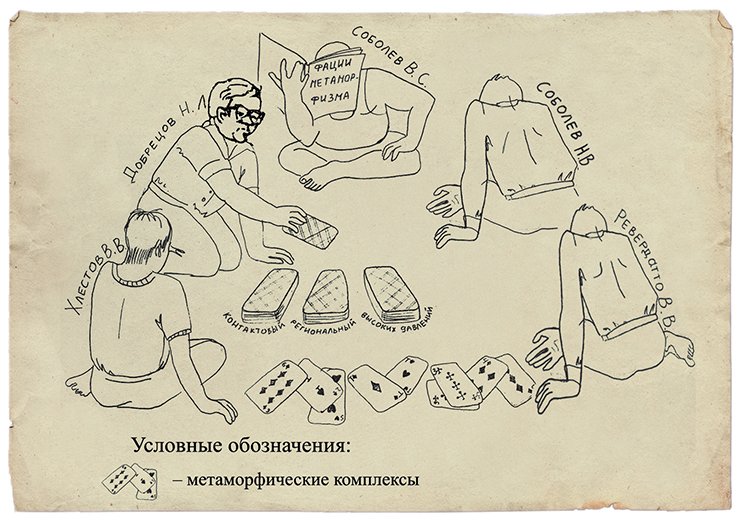
V. S. Sobolev and his team of young researchers were at the forefront of the studies of deep physical and chemical processes in the Earth crust and upper mantle. In 1976, Sobolev and his “pups” were among the first scientists in the Siberian Branch to receive the Lenin Prize – for their studies in the theory of metamorphism. Further joint research of Sobolev’s team together with specialists from Yakutia and Irkutsk in the area of kimberlite magmatism led to the discovery of the first diamond province in the country, and later discoveries of deposits in Arkhangelsk district, in Syria and in Canada, as well as the discovery of unique diamonds in metamorphic rocks of Kokchetau in Kazakstan.
N. L. Dobretsov wrote: “By metamorphism we mean the major processes occurring in the Earth’s interior. The main process is recrystallization of rocks, phase transitions of matter under the effect of ever higher – as moving towards the planet center – temperatures and pressures. The second process is melting of rocks and shift of the melt. The processes are called metamorphism and magmatism, respectively. Ores, oil and diamonds are material results of both processes. The surface manifestation of these main processes is called tectonics.The movement of plates affects the course of geological processes: some plates submerge, others collide and rise, as the Himalayas, which consequently causes metamorphism, melting and displacement of rock melts. This, in turn, affects the movement of plates, changing their direction, velocity, etc. Today, research of the evolution and structure of Earth is focused on geodynamics – a complex discipline where tectonists work hand to hand with mathematicians, geophysicists, geochemists, ore mineralogists, petrologists and many others. Many achievements of Siberian scientists in this field are marked by the State Award of the Russian Federation.”During the first few years in Akademgorodok I did not neglect my self-education and attended seminars and courses in the institutes: two in our IGG, a course in the Institute of Hydrodynamics, which was initially read by Lavrentiev himself, and a seminar on mathematical statistics and probability theory read by A. A. Borovkov, a future Academician. By the way, we shared a posgraduate student, who worked on stochastic models of crystallization and preservation of diamonds.
Sobolev sent me to the Novosibirsk State University to teach. When I was young, I was always short on money, just like everyone else, so I had a side job unloading railroad cars with perishable fruit on the Seyatel station nearby. Sometimes I would make more money on a single weekend than my whole monthly salary of a junior staff researcher. When Sobolev learned about it, he said: “Working as a loader is a good thing, but university work is easier and more stable…”
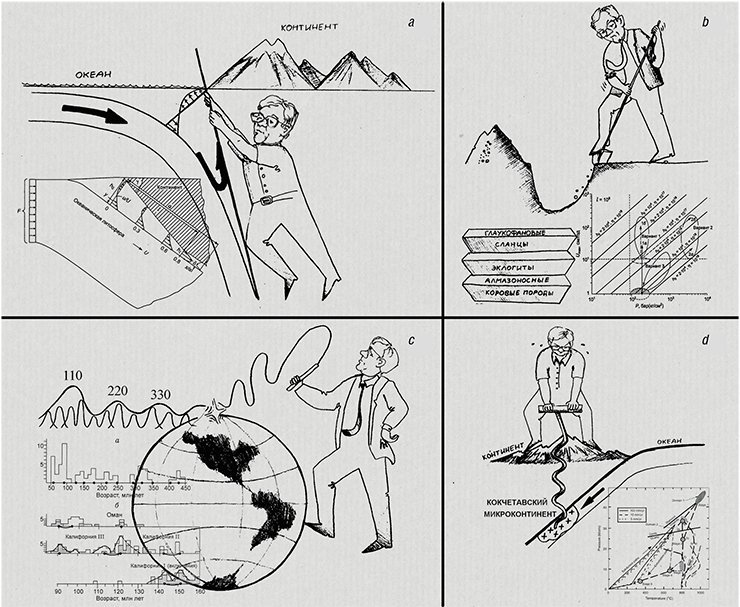
In this regard, the ice cover of Lake Baikal can be used as an unusual object for modeling the movement of the Earth’s crust plates and prediction of earthquakes. This idea dawned up on me, as I am a keen fisher, who was lucky enough to ice-fish many times on Baikal. There, when blocks of ice collide, ice-hummocks grow before one’s very eyes! The boom is as strong as that during earthquakes, and water splashes out from the hole: that’s a true “ice quake.” Certainly, this is due to the movements of ice plates rather than seismic reasons. It is noteworthy that this happens only in spring when the thick ice floes become nonuniform: their upper part becomes brittle, while the lower part at the interface with water is at the stage of submelting, a kind of a special visco-plastic state. And all this diversity occurs at a one-meter depth…”
My leadership and management skills were molded during my work at the Buryatia Science Center, an affiliate of the Siberian Branch of the Academy. Before that, I was head of laboratory and did not plan to climb the ladder. But when local authorities dismissed F. P. Krendelev, who was the director of the Geological Institute at the time, and did it ignominiously and with a scandal, A. A. Trofimuk felt insulted and decided to send me there. The main argument was almost the same as my grandfather’s: “There are many heads of laboratories like you here. Out there, you will get a chance. It will be a difficult road, the more so that there are some national peculiarities. But what is the most important – you will get new opportunities.”
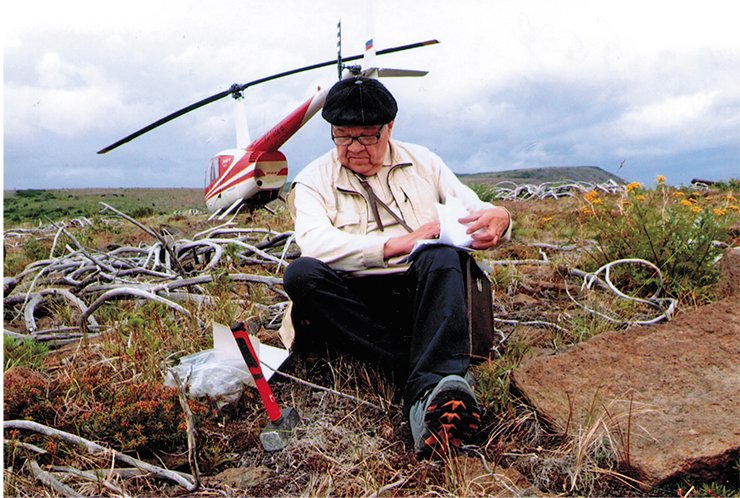
Next, I basically followed the scheme which had already proven successsful during the creation of the Siberian Branch (it should be added that this scheme was later used with all other regional centers of the Academy). I brought several young scientists and graduates from Novosibirsk State University. Together with the staff selected by Krendelev, they made up an energetic young team. We fulfilled the tasks set by Trofimuk: the Institute has become one of the best geological institutes in Russia.
Andrey Alekseevich Trofimuk headed the Institute of Geology and Geophysics, which he founded, for 30 years. When he was still new at his position, he addressed his teammates with the words which any good leader can use as a motto: “I am not the best among you, but destiny has decided that I become your director. Work, and your glory will be my glory, too.”
Development of the young Siberian research has attracted the attention of the world academic community. Academgorodok was visited by some outstanding political and public figures, as well as by foreign delegations and well-known researchers. Foreign visitors were interested in the results achieved in innovative and boundary areas, where different research fields overlapped. It was here, at the Siberian Branch, that the first particle colliders were created – ideas generated in this area had a profound impact on further development of world physics. Among many other achievements made by Siberian researchers was the revival of Russian genetics and the development of new directions in spin chemistry and investigations into the synthesis of gene-targeted biologically active compounds on the basis of oligonucleotides. People would come here also to gain experience – similar research centers sprang up in Russia and all over the world (Dobretsov, 2007)Sixty years have passed since the foundation of Akademgorodok; it has become home for six generations of scientists (ten years is the average period of writing a Candidate of Sciences thesis; afterwards, the former student can become a mentor). Thousands of research works, scientific awards, hundreds of authorship certificates and patents testify to the success of this venture; many books, collections, memoirs, articles and electronic pieces have been written on the history of the establishment of science in Siberia.
The chronicle of these achievements is a long story. It is impossible to seize the unseizable; so we decided to focus on one thing in the anniversary edition of our magazine: to convey, as accurately as possible, the phenomenal atmosphere of liberal thinking, joviality and creativity which saturated the town of passionarians in the very beginning of its existence. A town where people met not only in the multitude of joint academic seminars, but during volleyball games and on the beach; where seasoned scientists and green students shared hallways and a rookie could approach any Academician or professor, ask a question and get an answer.
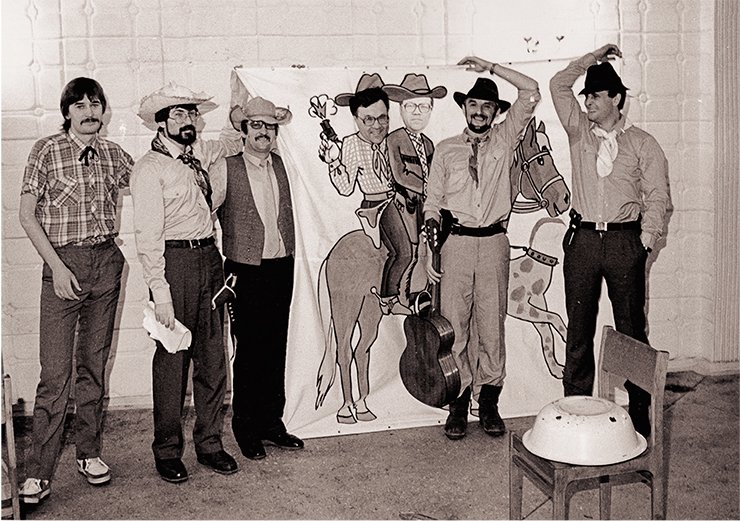
This independent spirit of Akademgorodok nourished the Tree of Knowledge, which bore amazing fruit: in a mere decade, research conducted in Akademgorodok reached, and in some cases, beat the world level. Scientific schools created by the pioneer scientists and their scientific children and grandchildren were built on a conceptually new level; with the maximum freedom of research thought, they were more than just a starting point; they became the foundation for all future achievements of the Siberian Academy.
*The Russian name Sobolev (Соболев) means “of sable”, from соболь – sable
References
Dobretsov N. L. Academician Dobretsov: Ideas and People // Science First Hand. 2016. V. 67. N. 1. P. 48—71 [in Russian].
Kontorovich A. E. Global problems of oil and gas and a new paradigm for the development of the Russian oil and gas complex // Science First Hand. 2016. V. 67. N. 1. P. 6—17 [in Russian].
Sobolev V. S. Selected works: Petrology of the upper mantle and the origin of diamonds. Novosibirsk: Nauka, 1989. 252 p. [in Russian].


